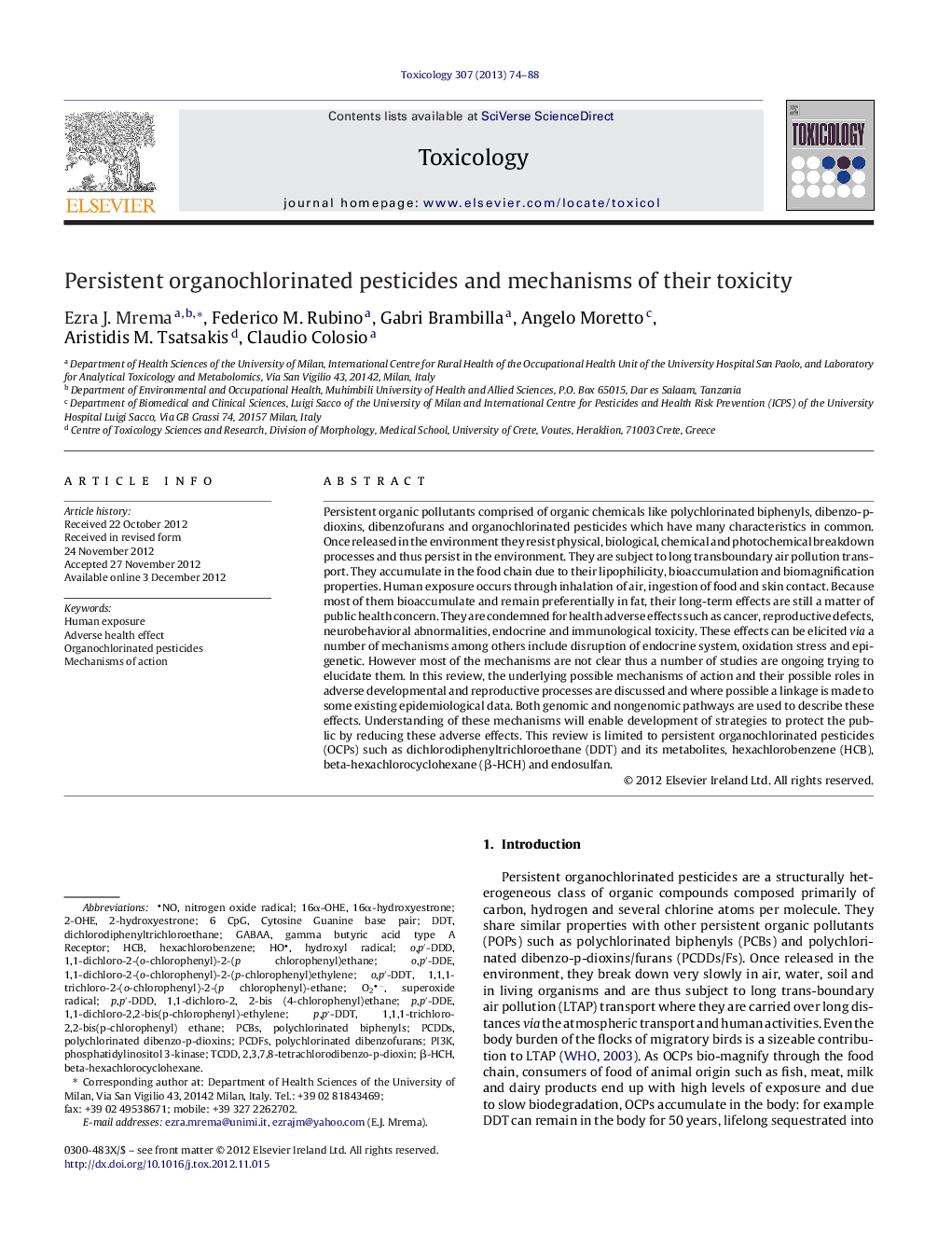| کد مقاله | کد نشریه | سال انتشار | مقاله انگلیسی | نسخه تمام متن |
|---|---|---|---|---|
| 2595696 | 1562349 | 2013 | 15 صفحه PDF | دانلود رایگان |

Persistent organic pollutants comprised of organic chemicals like polychlorinated biphenyls, dibenzo-p-dioxins, dibenzofurans and organochlorinated pesticides which have many characteristics in common. Once released in the environment they resist physical, biological, chemical and photochemical breakdown processes and thus persist in the environment. They are subject to long transboundary air pollution transport. They accumulate in the food chain due to their lipophilicity, bioaccumulation and biomagnification properties. Human exposure occurs through inhalation of air, ingestion of food and skin contact. Because most of them bioaccumulate and remain preferentially in fat, their long-term effects are still a matter of public health concern. They are condemned for health adverse effects such as cancer, reproductive defects, neurobehavioral abnormalities, endocrine and immunological toxicity. These effects can be elicited via a number of mechanisms among others include disruption of endocrine system, oxidation stress and epigenetic. However most of the mechanisms are not clear thus a number of studies are ongoing trying to elucidate them. In this review, the underlying possible mechanisms of action and their possible roles in adverse developmental and reproductive processes are discussed and where possible a linkage is made to some existing epidemiological data. Both genomic and nongenomic pathways are used to describe these effects. Understanding of these mechanisms will enable development of strategies to protect the public by reducing these adverse effects. This review is limited to persistent organochlorinated pesticides (OCPs) such as dichlorodiphenyltrichloroethane (DDT) and its metabolites, hexachlorobenzene (HCB), beta-hexachlorocyclohexane (β-HCH) and endosulfan.
► Diet is a major source of OCP exposure for the general population.
► OCPs exposure can induce enzymes for hormones and toxicants metabolisms.
► OCPs exposure are suspected to be associated to endocrine function disruption.
► Possible toxicity mechanisms are hormone disruption, oxidative stress or epigenetic.
► Understanding of these mechanisms helps to improve public health interventions.
Journal: Toxicology - Volume 307, 10 May 2013, Pages 74–88